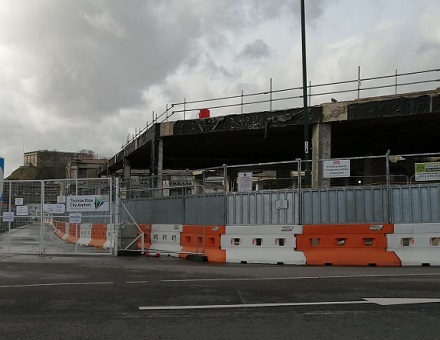Turning shopping centres into parkland

The pandemic and the collapse of retail is changing the role and appearance of many city centres. Some Local Authorities are now starting turning shopping centres into parkland.
We’ve discussed this in our posts Cities are changing (May 2020) which looked at London, Manchester York, Birmingham and Leeds, and Converting shops into homes (July 2020)
Some other towns and cities may see more ambitious changes that will transform the whole identity of the High Street.
Stockton on Tees Council plans to demolish the Castlegate shopping centre, and replace it with parkland. The 300m long shopping centre was completed in 1972 and, together with a dual carriageway formed a barrier between the High Street and the river. The plan is to create an area for leisure with views over the river Tees and space to spare for a new Central library and Council offices.
The initial cost will be about £40, with an additional £30m later for the public buildings. The dual carriageway will become a single carriageway and tenants that have survived the pandemic are offered space in Stocktons other, now under utilised, shopping centre in Wellington Square.
At Nottingham, when the pandemic struck, the Council were demolishing the Broadmarsh Shopping Centre to be redeveloped in partnership with Intu. But the collapse of Intu has left the cash strapped Council with a dilemma.
Broadmarsh opened in 1975 and is a huge and ugly barrier between the city’s railway station and the city centre, also blocking views from the street of Nottingham Castle. Pedestrians heading for the city walked through an underpass.
Part of the site had been demolished as a “slum clearance” project, but the development also meant demolishing Drury Hill, a route into the city for a thousand years which, had it survived, might have rivalled The Shambles at York as a tourist attraction. The Council agreed to preserve a few of the many ancient caves in the area, which are now an important tourist attraction.
Broadmarsh was unpopular and always played second fiddle to the Victoria Shopping Centre, itself built on the site of the elegant Victoria railway station (1900 – 1967).
Broadmarsh is now half demolished and the subject of much discussion. The Nottinghamshire Wildlife Trust called for the whole site to be transformed into parkland and wildlife areas. Several ideas have been put forward for the 20 acre site, including parkland on a scale that would be unprecedented in any major European city. More likely is a substantial area of parkland and open space, with limited commercial development, some social housing and a new Central Library. A report is being prepared, to be considered in the summer.
Shopping centres grew rapidly when post war austerity gave way to consumerism, “keeping up with the Joneses” and dedicated following of fashion. It seemed to represent the future, and relics of the past were not allowed to get in the way of progress.As cpmmercialisation of cities grew, residents moved out.
Now we seem to be entering a new era in which city centres will thrive if they’re pleasant, relaxing and safe places to be.
Photograph: Through the partly demolished remains of the Broadmarsh Centre in Nottingham, it is now possible to see the imposing castle (left), a view that the Broadmarsh Centre has obscured for years.
Don’t forget: Mothers day is Sunday 14th March 2021
…
